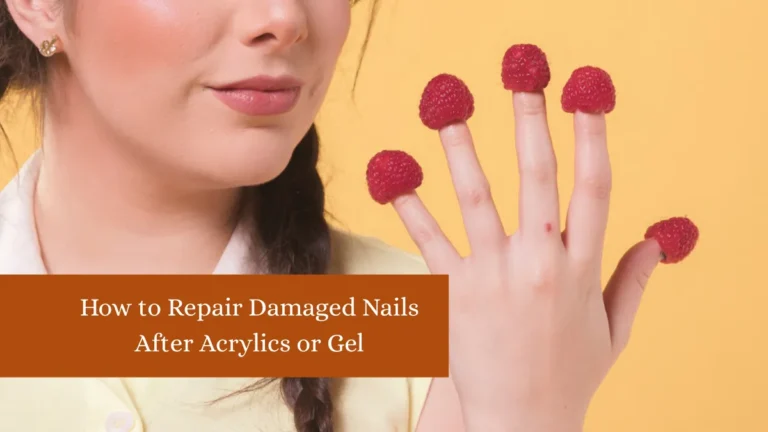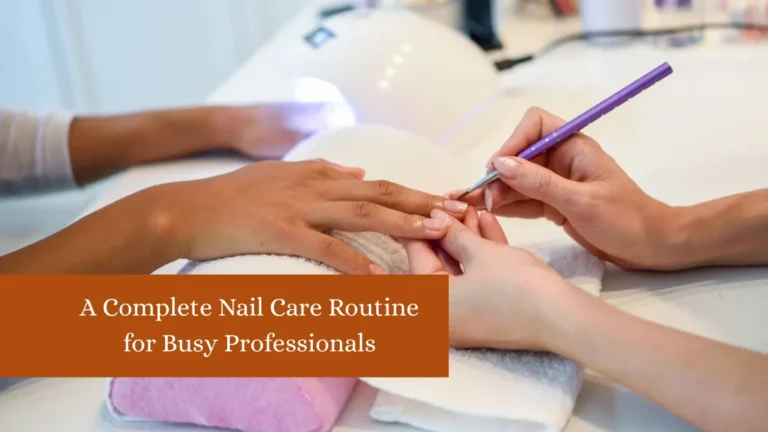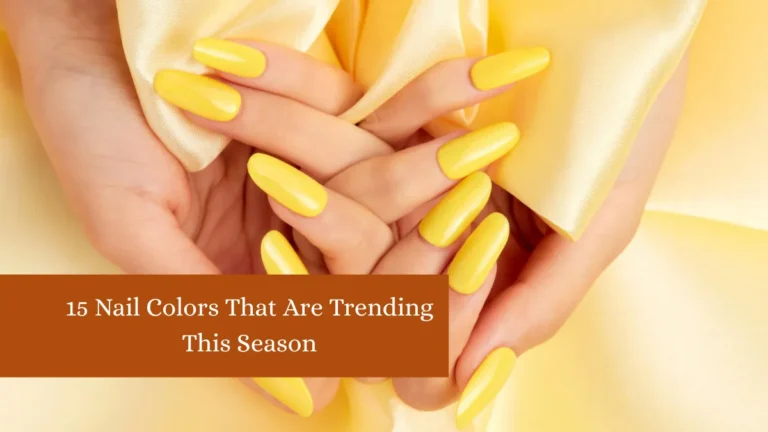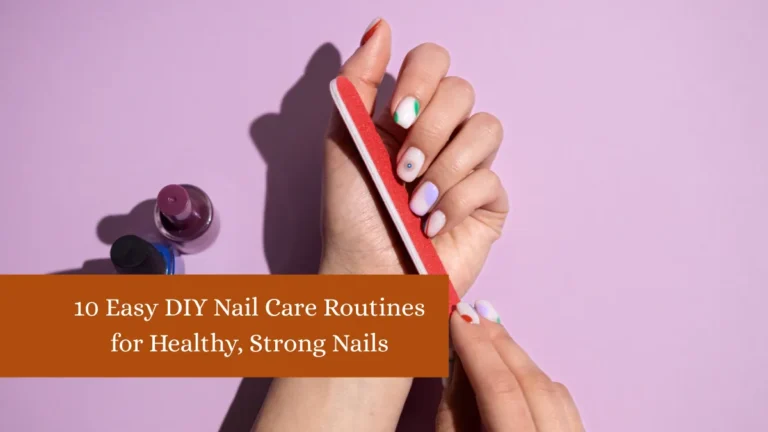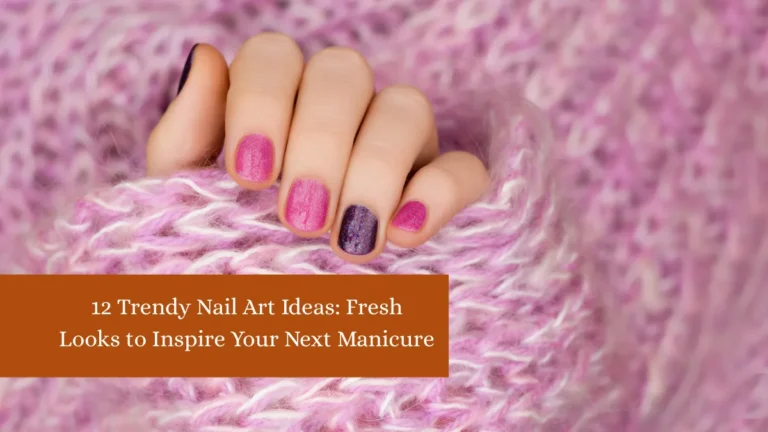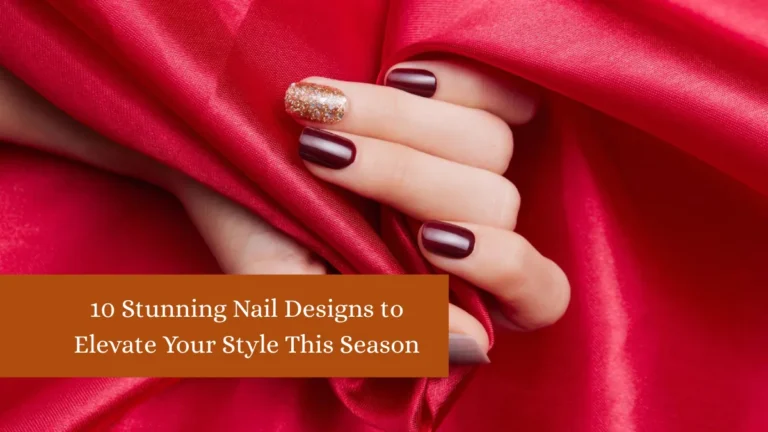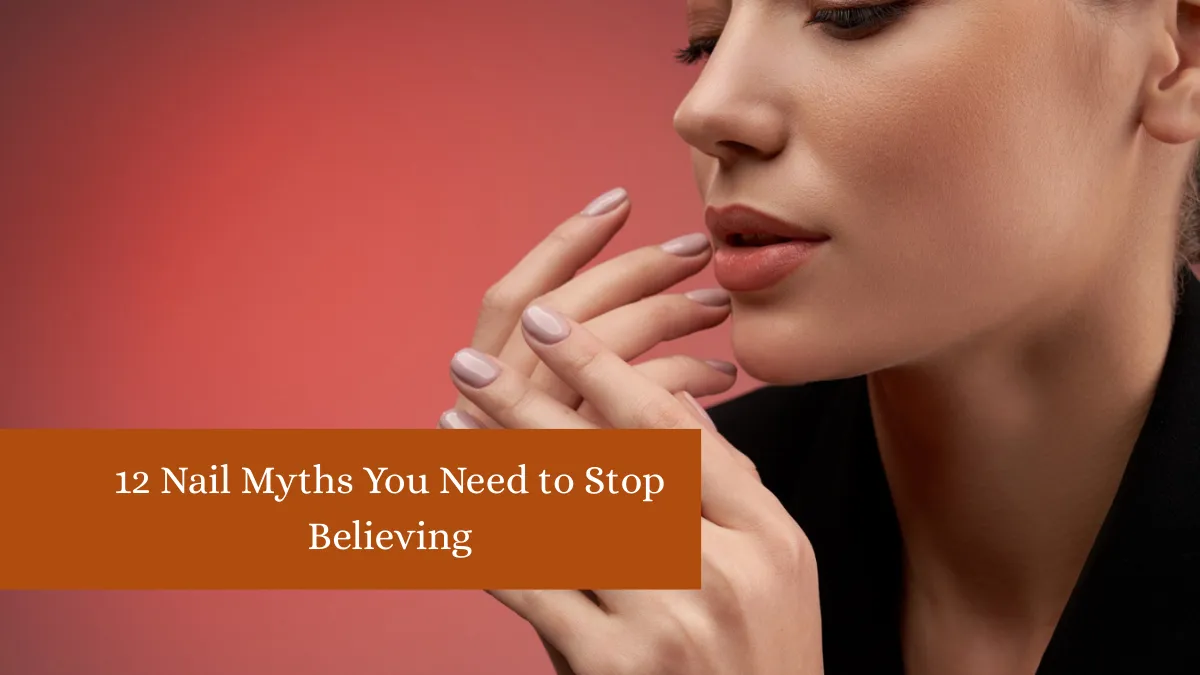When it comes to nail care, the internet and beauty circles are flooded with advice—some helpful, some misleading. Unfortunately, many people still believe myths that not only waste time and money but can also harm nail health. From old wives’ tales about nail growth to misconceptions about products, misinformation can prevent you from achieving the healthy, beautiful nails you want.
Whether you’re a beauty enthusiast or just someone who enjoys keeping their nails neat and professional, knowing the truth is crucial. In this guide, we’re breaking down 12 of the most common nail myths that continue to circulate.
Each one will be explained in detail so you’ll understand where the myth comes from, why it’s wrong, and what you should be doing instead. By separating fact from fiction, you’ll be able to care for your nails more effectively, avoid unnecessary damage, and adopt habits that actually make a difference.
1. Myth: Nails Need to “Breathe”
Many people believe nails need time without polish so they can “breathe,” but this is scientifically incorrect. Nails are made of keratin, a protein, and are non-living once they emerge from the nail bed. They don’t have pores, lungs, or any respiratory function. The part of your nail that’s alive is under the skin at the matrix, and it receives nutrients from your blood supply—not air. While it’s true that constant nail polish use can lead to discoloration or dryness, this isn’t because nails are suffocating.
Instead, the chemicals in polish and removers can dehydrate nails, making them brittle. The solution isn’t to let nails “breathe” but to moisturize them regularly and use a strengthening base coat under polish. Taking occasional breaks from polish can help restore hydration, but it’s about chemical exposure, not oxygen deprivation. Understanding this will help you focus on moisture and nutrition rather than unnecessary “breathing” breaks.
2. Myth: Cutting Cuticles Is Good for Nail Health
One of the most common salon practices is trimming cuticles, with the belief that it makes nails grow faster and look neater. In reality, cuticles serve a protective role, acting as a barrier that keeps bacteria and fungi from entering the nail bed. Removing them entirely increases the risk of infection, inflammation, and nail damage. While gently pushing them back after softening with cuticle oil is safe, cutting them aggressively can lead to pain, redness, and even long-term nail deformities.
Many professionals now recommend using a cuticle remover gel to dissolve excess skin instead of cutting. Maintaining soft, hydrated cuticles with daily oil application is far healthier than removing them altogether. This not only preserves your nails’ natural defense system but also keeps your manicures looking clean and professional for longer. The best nail care embraces the cuticle’s function rather than eliminating it for short-term aesthetics.
3. Myth: White Spots Mean Calcium Deficiency
White spots on nails—known as leukonychia—are often blamed on a lack of calcium, but this is a persistent misconception. These spots are usually caused by minor trauma to the nail matrix, such as knocking your finger against something or overzealous filing. In some cases, they may appear due to allergic reactions to nail polish or base coats. While calcium is important for overall bone health, its deficiency doesn’t manifest as white spots on nails.
These marks generally grow out naturally with the nail and are harmless. If you notice frequent or widespread discoloration, it may indicate an underlying health issue or fungal infection, in which case a dermatologist should be consulted. But for most people, occasional white spots are simply the result of everyday bumps and bangs. Focusing on gentle nail care, avoiding harsh tools, and protecting nails from trauma is the best prevention—not calcium supplements.
4. Myth: Frequent Trimming Makes Nails Grow Faster
It’s widely believed that trimming nails regularly will speed up their growth, similar to the myth about cutting hair. Nail growth is determined by genetics, overall health, and circulation—not by how often you cut them. Nails grow from the matrix under your skin, and trimming only affects the visible, non-living part. While regular filing and trimming help maintain a neat shape and prevent snags or breaks, they don’t alter growth speed.
What trimming can do is reduce breakage, giving the appearance of consistent growth because nails are less likely to snap. If you want to truly improve growth rate, focus on a balanced diet rich in protein, biotin, and vitamins, as well as good hydration. Maintaining healthy cuticles and avoiding trauma will also support optimal nail growth. Trimming is maintenance, not a growth accelerator, so manage your expectations accordingly.
5. Myth: Gel Manicures Always Ruin Nails
Gel manicures often get a bad reputation for causing thin, brittle nails. While improper application or removal can damage nails, gel polish itself isn’t inherently harmful. The main culprit is aggressive scraping during removal, which can strip away nail layers. When done correctly—by soaking in acetone and gently lifting the polish—damage is minimal. Additionally, over-curing under UV lamps or skipping a nourishing base coat can contribute to dryness and breakage.
The key to maintaining healthy nails with gels is to choose a skilled technician, avoid picking at polish, and give your nails occasional breaks between applications. Pairing gel manicures with a hydrating cuticle routine and strengthening treatments ensures your nails remain strong and smooth. So, gels aren’t the villain—they just require proper care and responsible salon practices.
6. Myth: Nail Strengtheners Are Always Beneficial
Many people turn to nail strengtheners at the first sign of brittleness, assuming more is always better. However, overusing hardening products—especially those with formaldehyde—can make nails overly rigid and more prone to snapping. Strengtheners should be used in moderation, ideally as a short-term treatment rather than a daily habit. For many, the real issue behind brittle nails is dehydration or nutritional deficiencies, not a lack of hardeners.
The most effective approach combines occasional use of a gentle strengthener with regular moisturizing and a balanced diet. When nails are too hard, they lose flexibility, which increases the risk of breakage. Understanding that nail care is about balance—not just strength—will help you avoid over-reliance on these products and promote healthier, more resilient nails in the long term.
7. Myth: Buffing Nails Is Harmless
Buffing gives nails a smooth, shiny finish without polish, but excessive buffing can thin the nail plate. Each time you buff, you remove layers of keratin, which weakens nails over time. While occasional gentle buffing is fine for smoothing ridges, daily or aggressive buffing can lead to sensitivity, peeling, and breakage. Professionals recommend using a fine-grit buffer no more than once every two to three weeks.
Always buff lightly and in one direction to avoid splitting. If you love the look of shiny nails, consider using a ridge-filling base coat instead, which provides a smooth surface without physically removing layers. Like many nail care steps, buffing should be practiced in moderation to protect the natural strength and integrity of your nails.
8. Myth: Soaking Nails Before a Manicure Is Best
Traditional manicures often start with soaking hands in warm water to soften the cuticles, but this can actually cause problems. Water absorption temporarily swells nails, making them more flexible and prone to bending or splitting when filed. As they dry, they contract, which can cause polish to chip sooner. Modern nail care experts now recommend “dry” manicures, where cuticles are softened with oil or remover rather than water.
This approach keeps nails strong and ensures polish adheres better. If you enjoy the spa-like feel of soaking, keep it brief and follow immediately with moisturizer to prevent dehydration. Switching to a dry prep routine can significantly extend the life of your manicure while protecting nail health.
9. Myth: Dark Polish Always Stains Nails
While dark polish can sometimes leave behind a yellow tint, it’s not the color itself but the lack of a base coat that causes staining. Pigments in polish can penetrate the porous surface of nails, especially if they are dry or damaged. Using a high-quality base coat creates a protective barrier that prevents discoloration. Staining can also result from prolonged wear without giving nails a break, regardless of the polish shade.
To enjoy deep reds, blues, or blacks without worrying about stains, always apply two layers of base coat and avoid leaving polish on for more than two weeks. With proper preparation and removal, dark shades can be a chic, worry-free choice.
10. Myth: Biting Nails Helps Them Grow Back Stronger
Some believe that biting nails “stimulates” growth, but in reality, it damages both the nail plate and surrounding skin. Chronic nail-biting can lead to irregular growth, ridges, and even infections around the nail bed. It also puts you at risk of transferring bacteria from your mouth to open skin around your nails. If you’re trying to grow strong nails, breaking the biting habit is essential.
Strategies include applying bitter-tasting nail polish, keeping nails neatly trimmed, or replacing the habit with stress-relieving activities like squeezing a stress ball. Nails grow best in a healthy, undisturbed environment—biting only delays and damages that process.
11. Myth: Acrylic Nails Completely Ruin Natural Nails
Acrylic nails often get blamed for damaging natural nails, but like gel polish, the problem lies in improper application or removal. When done professionally with proper prep and removal, acrylics can be worn without significant long-term damage.
Issues arise when nails are over-filed during prep or when acrylics are pried off instead of soaked in acetone. Regular breaks between sets, combined with nourishing treatments, help maintain nail health. Acrylics themselves don’t “eat away” at nails—they simply require careful handling and a technician who values nail health over speed.
12. Myth: Expensive Products Guarantee Better Nail Health
While high-end nail care products can be luxurious, price doesn’t always equal performance. Many affordable brands offer excellent base coats, cuticle oils, and polishes with the same effective ingredients as luxury versions. The key to healthy nails is consistency, not cost.
Using a budget-friendly moisturizer daily will yield better results than an expensive cream used once a week. Look for products with proven ingredients like jojoba oil, vitamin E, and biotin, regardless of price point. Investing time in a good routine matters more than investing money in pricey products that you rarely use.
Bottom Line
Nail care is often clouded by myths that can lead to poor habits and unnecessary damage. By understanding the truth behind these misconceptions, you can make smarter decisions that actually improve nail health. Focus on gentle, consistent care, proper nutrition, and protective habits rather than falling for outdated advice. Healthy nails are the result of informed choices, not quick fixes or misleading beauty trends.
FAQs
1. Do nails really need oxygen?
No, nails get nutrients from your bloodstream, not air.
2. Can cutting cuticles cause infections?
Yes, cuticles protect nails from bacteria and fungi.
3. Do white spots mean I need more calcium?
Usually no—they’re often caused by minor trauma.
4. Is gel polish always damaging?
Not if applied and removed correctly.
5. Are expensive nail products worth it?
Not always—ingredients and routine matter more than price.
✨ You May Also Like ✨
